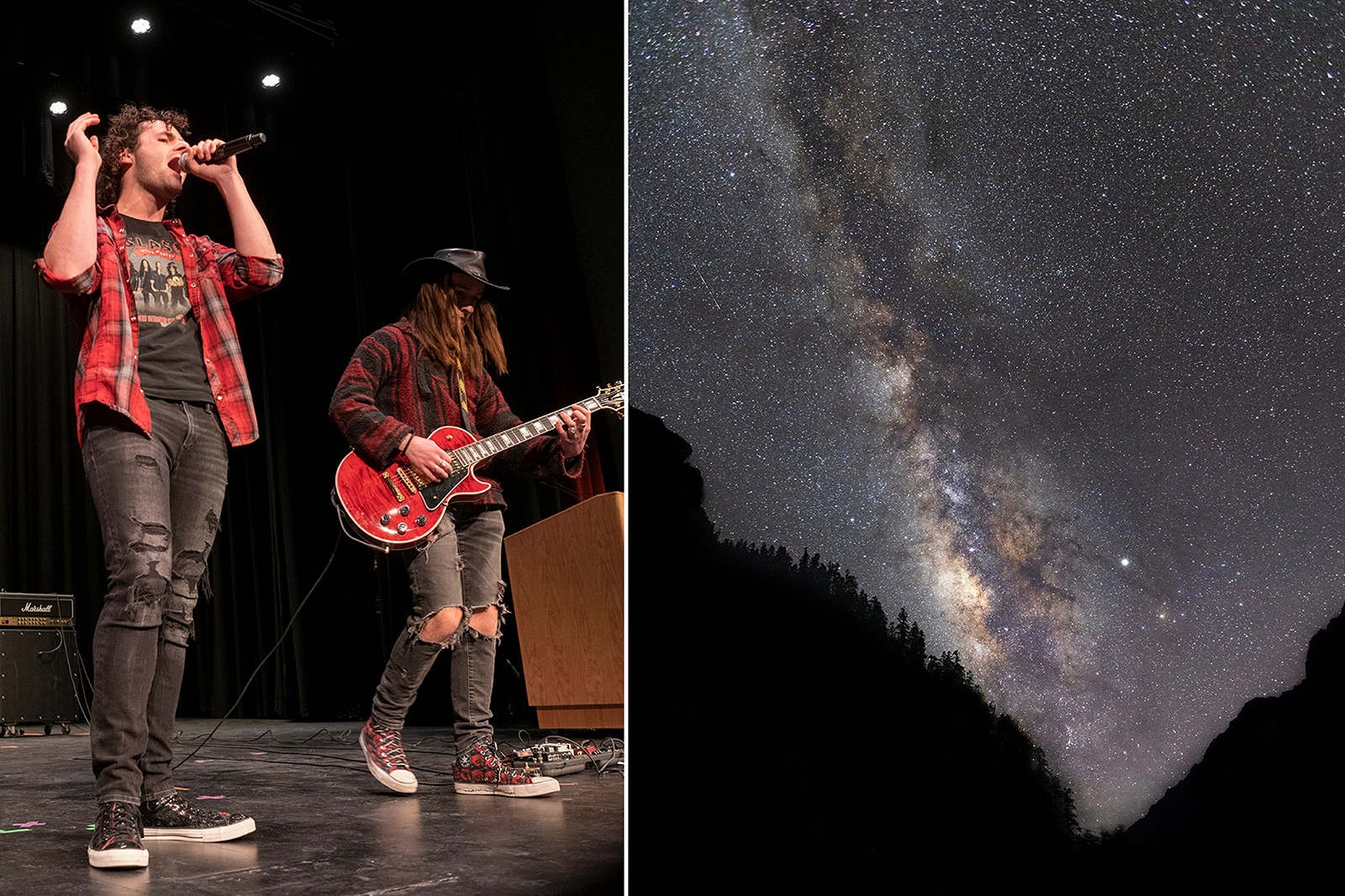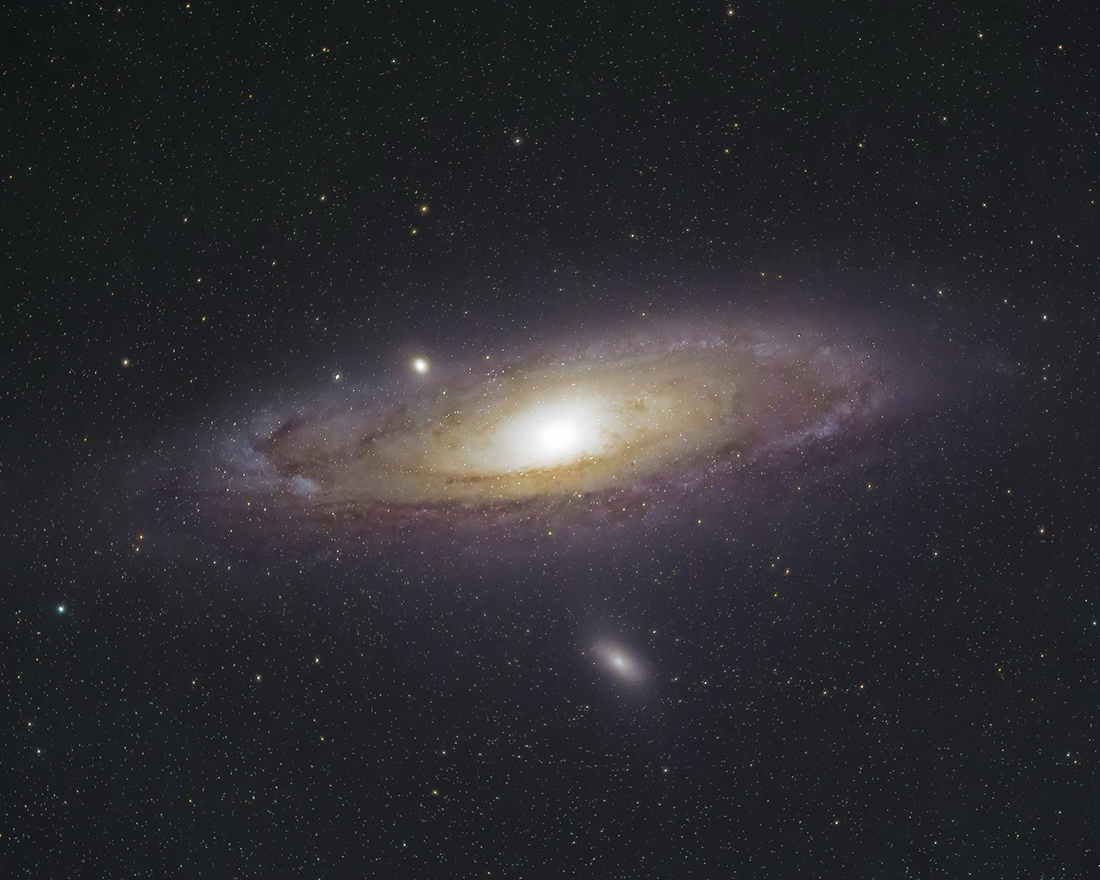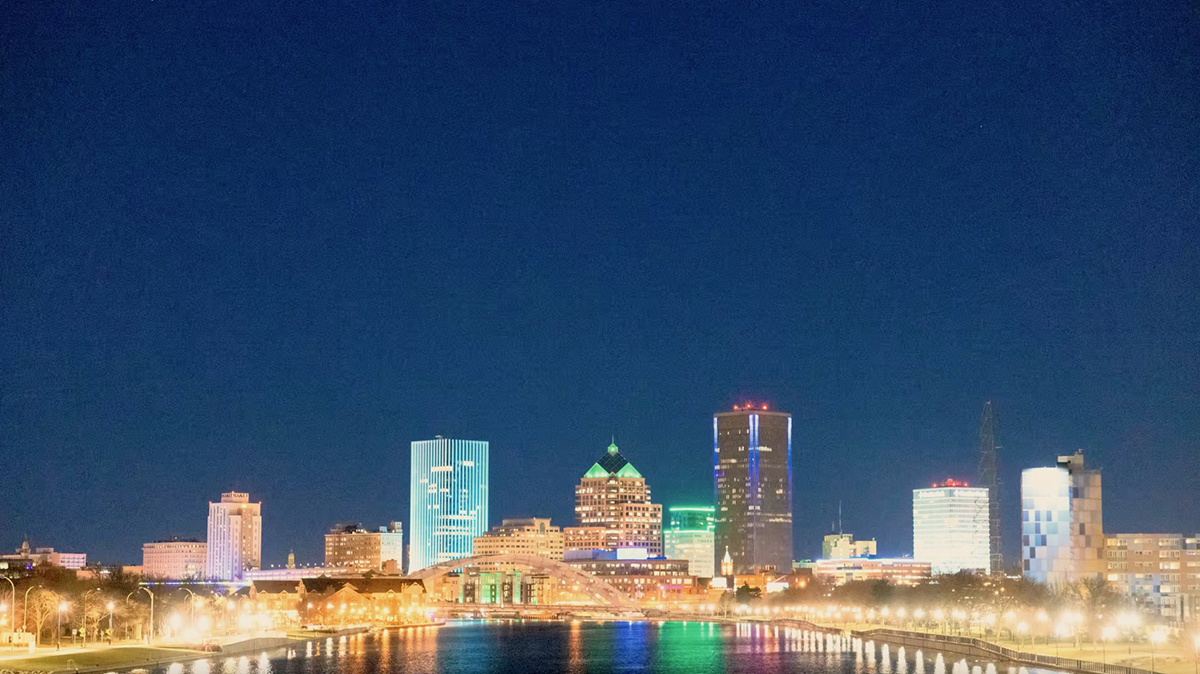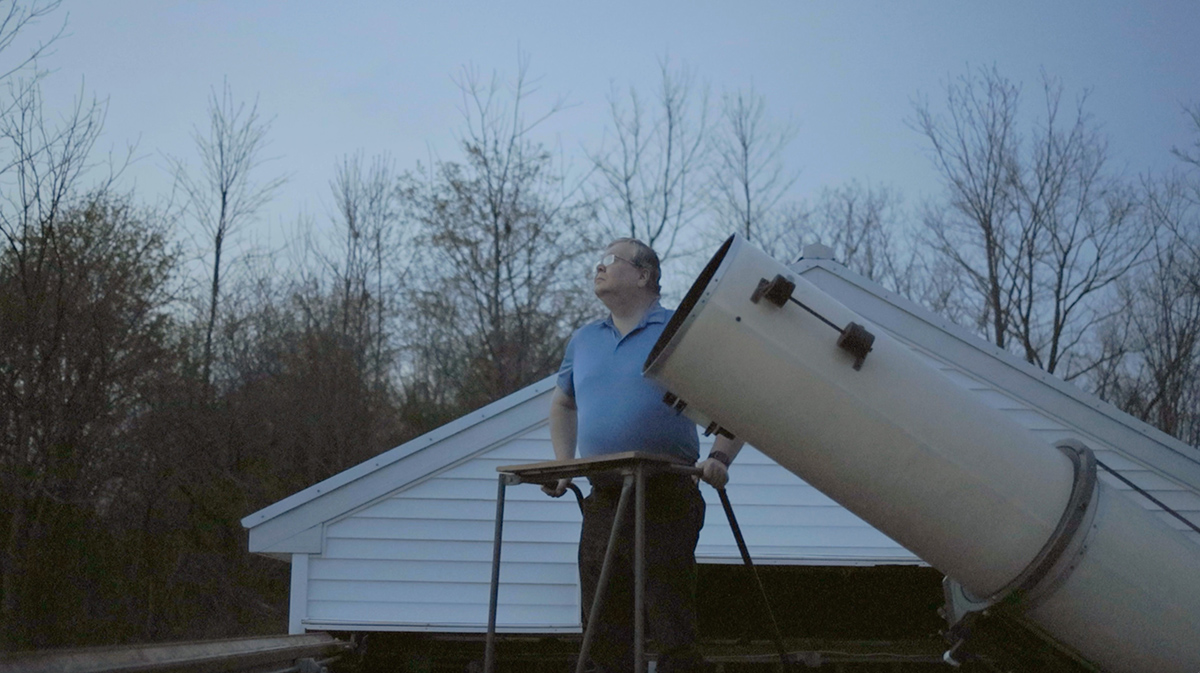Choirs and the cosmos: student’s artistic universe is a symphony of light
Left by Elizabeth Lamark; right by Quinn Freidenburg
In the left photo, Quinn Freidenburg, left, sings alongside guitarist Zach Adams '24 (photographic and imaging arts BFA - advertising photography option) in their band Retograde. On the right is a photo of space Freidenburg took as a high school senior while in the Himalayas — the image completed the portfolio he submitted to RIT.
Quinn Freidenburg stood on a trail in the Himalayas, watching clouds dissipate into a clear sky.
In this stargazer’s paradise, he points his camera to the night sky, capturing space for 15 feverish minutes before clouds emerge again. A resulting image completed his portfolio for college applications and remains a personal favorite to this day.
The celestial picture helped Freidenburg ’24 (photographic and imaging arts BFA - photojournalism option) get admitted to RIT with a Founders Scholarship. Fittingly, Freidenburg wrapped up his RIT studies with a capstone documentary, Lost in Light, about space — specifically, the issue of light pollution, artificial outdoor light that obscures the night sky, in Rochester.
“It’s come full circle,” said Freidenburg, from Oakland, Calif.
Quinn Freidenburg
Freidenburg's capture of the Andromeda Galaxy from Cherry Springs State Park in Pennsylvania.
Freidenburg spent the last four years continuing astrophotography pursuits along with other photographic and creative interests.
On any given day, he could be found sharing encyclopedic knowledge of the gear available for students to check out from the School of Photographic Arts and Sciences’ Cage, where he was a manager, photographing events for the College of Art and Design’s marketing department, covering stories for class assignments, or fronting his rock band.
“Every major box that I could have wanted checked was checked here,” Freidenburg said.
Quinn Freidenburg
A bright-lit Rochester skyline Freidenburg photographed for his capstone project about light pollution in the area.
Freidenburg is equally gifted with a camera as he is behind a microphone.
Freidenburg was an RIT Performing Arts Scholar and founding member of the rock band Retrograde, winner of the 2023 Ovation contest, with fellow RIT students. He was the lead singer of the group with a 1980’s hard rock sound that was a departure from his background as a classically trained singer.
Freidenburg grew up a vocal virtuoso. He joined a church choir at age 4 and spent fourth through eighth grades at the GRAMMY-winning Oakland’s Pacific Boychoir Academy, where he split school days between academics and studying music and singing.
His time at the choir school brought a lifetime's worth of unforgettable experiences.
Along with solo recordings, Freidenburg and his choir were recorded on albums, sang with world-class symphonies — including one conducted by the famed Gustavo Dudamel — performed for former California Governor Jerry Brown, and sang on international tours across Asia, Australia, Europe, and South America.
He and his choir mates also performed on “America’s Got Talent” in 2013.
Around the time Freidenburg left the Boychoir Academy after eighth grade, a photography interest blossomed. His uncle and grandfather, two hobbyist photographers, even offered identical advice for studying photography in college.
“They both, at the same time, said, ‘RIT,’” Freidenburg said. “They were like, ‘If you’re going to school for photography, you go to RIT.”
Quinn Freidenburg
David Bishop of the Astronomy Section, Rochester Academy of Science operates a large telescope. Bishop was featured in a multimedia story Freidenburg did on the local astronomy organization.
Between three years working at the Cage, learning from faculty he considers “deeply caring mentors,” and building a professional network of alumni and well-known photojournalists who visited campus for guest lectures, Freidenburg feels validated by his RIT decision.
“If you want to become one of the best photographers in the world, this is the place to go,” Freidenburg said. “This is not a ‘I kind of like photography program.’ This is a ‘You are going to live photography program.’”
Following graduation, Freidenburg is embarking on a five-week cross-country road trip — stopping at national parks to exercise his outdoorsy spirit — to Oakland, where he will then fly to Hawaii.
Freidenburg is Hawaiian and has family living on the island of Maui.
He spent last summer there, leaving shortly before wildfires devastated the area, particularly the town of Lahaina. He made two trips back to Maui to cover the aftermath and recovery efforts from a human angle.
Quinn Freidenburg
Freidenburg focused his Hawaiian wildfire photography on the people behind the heroic relief efforts rather than the wreckage left behind.
“Lahaina isn’t a place, it’s a people” is the phrase Freidenburg repeatedly heard. He took it to heart and is now making an open-ended return to Maui to continue the work.
“My main interest is less about purely environmental issues and more about how they affect human culture,” Freidenburg said. “What we need is people to be inspired and care about the community and show that people can help.”
Freidenburg was inspired to pursue the story during a campus visit in the fall from renowned photojournalist Tamir Kalifa, who, himself, covered the Hawaiian wildfires. The two remained in touch, with Freidenburg applying Kalifa’s continuous advice while navigating the story with care and compassion — staples of his approach to photojournalism.
Freidenburg spent extended time with locals affected by the natural disaster. Some days he left his camera at home, setting out simply to talk with people. The approach led to people opening up and granting Freidenburg access other journalists didn’t have.
When his photos were published in The Maui News, an outpouring of support for Freidenburg’s work followed and, he said, relief effort donations increased.
“I like the saying ‘Chance favors the prepared,’' Friedenburg said. “A lot of things were chance but none of those would have happened if I didn't approach it the way I did.”
Quinn Freidenburg
Freidenburg spent a lot of his time in Lahaina at Napili Noho Emergency Distribution and Resource Hub, which serves hundreds of displaced people and others in need every day.
Freidenburg said documenting the recovery process in Lahaina “showed me what my goals as a photojournalist are.”
Now, his journalistic compass, Hawaiian heritage, and heart are all pointing to Hawaii.
“This story is a foundational part of who I am,” he said.












